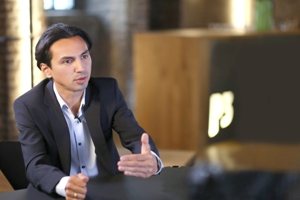Though the possibilities of 5G connectivity may seem simple to imagine, they won’t truly become a reality until we can achieve objective and accurate data surrounding coverage quality and the user experience, not to mention acquiring the correct technology. So says Hakan Ekmen, chief executive, P3 communications GmbH.
Exploring 5G
Both 4G and 3G were designed as new air interfaces, but 5G differs in that it has always been driven by discussions on the possible uses for it. In other words, the scope of 5G technology has always been defined by individual requirements. Those requirements include the interactivity and interlinkage of many different applications and devices, in a sense continuing what was started with 4G.
Once implemented, 5G connectivity will improve the day to day life of many consumers by supporting more automatic and interactive connected services and machines.
Emerging technologies like driverless cars, smart cities and the Internet of Things (IoT), for example, are dependent on consistent and agile 5G connectivity, which will also enable a number of enhanced services such as: high-speed entertainment in vehicles, on-demand services for connected objects and wider areas of service for devices like smartphones, wearables and M2M devices.
From a technological perspective, 5G is focused on new network system performances, such as reaching speeds of up to one Gbps for indoor smart office environments and 300 Mbps in dense outdoor urban areas as well as ultra-low latencies of or below single digit milliseconds and support for vehicles at speeds of up to 300 mph. Though the latter may sound excessive, trains in Japan and China have already exceeded this benchmark in speed tests, and the near future will likely see viable commercial speeds racing towards 300 mph.
Defining 5G
The good news is that the UK is well-positioned for the 5G revolution, thanks to the overall speed and network quality of 4G throughout the country, which has reached a high percentage of customer penetration in a relatively short amount of time.
Even in mostly rural areas, all operators provide coverage to a large extent, with UK customers being able to access 4G in more areas than several other European countries. In addition to this, the UK has been home to many independent trials with new service ideas based on 4G networks but also looking forward to 5G capabilities, such as driverless cars and smart cities.
Though many organisations and individuals have envisioned and began developing the new capabilities 5G will bring to our daily lives, 5G still lacks a standardised definition. Upcoming developments, which will likely be driven by the 2018 and 2020 Olympic Games – in Pyeongchang and Tokyo, respectively – are likely to face some problems due to the unstandardised nature of the technology.
The 5G future
In order to move forward into the 5G future it is vital that continuous testing and monitoring of networks and devices is embraced, so standards can be determined and continually improved. Ambiguous standards have, in the past, led to inoperability issues in mobile networks, especially when multiple vendors are in the mix.
Rigorous monitoring should be undertaken in all standards dealing with: 5G trials, radio interfaces, device requirements, security, IoT, self-organising networks (SON), network function organisation (NFV), network architecture changes and the requirements of new services.
It is vital that this testing and monitoring is not solely undertaken by service providers themselves, as they will be understandably selective of what results they publish and promote, pointing out major success stories while ignoring more negative issues such as areas not under coverage, unconnected customers or variances in speed, latency, dropped calls, etc.
A neutral and independent institute can fill these gaps, ensuring thorough results are released year on year in order to build an historic view of the developments and progress of telecoms networks and service levels. This sort of data is essential for governments and regulators, who need reliable information and comparable data in order to prepare decisions on future developments.
In today’s world, regular, rigorous and objective testing is already important and well-respected. It is without a doubt that these requirements will become increasingly important as technology and its applications become more complex, as customers won’t have the chance to do the research themselves before signing a contract with a service provider. With this in mind, there will always be a need for neutral and fair testing and monitoring.
The author of this blog is Hakan Ekmen, chief executive, P3 communications GmbH
Comment on this article below or via Twitter: @ VanillaPlus OR @jcvplus






